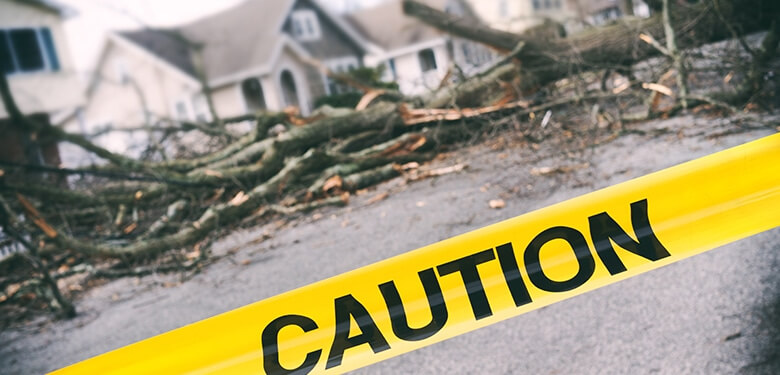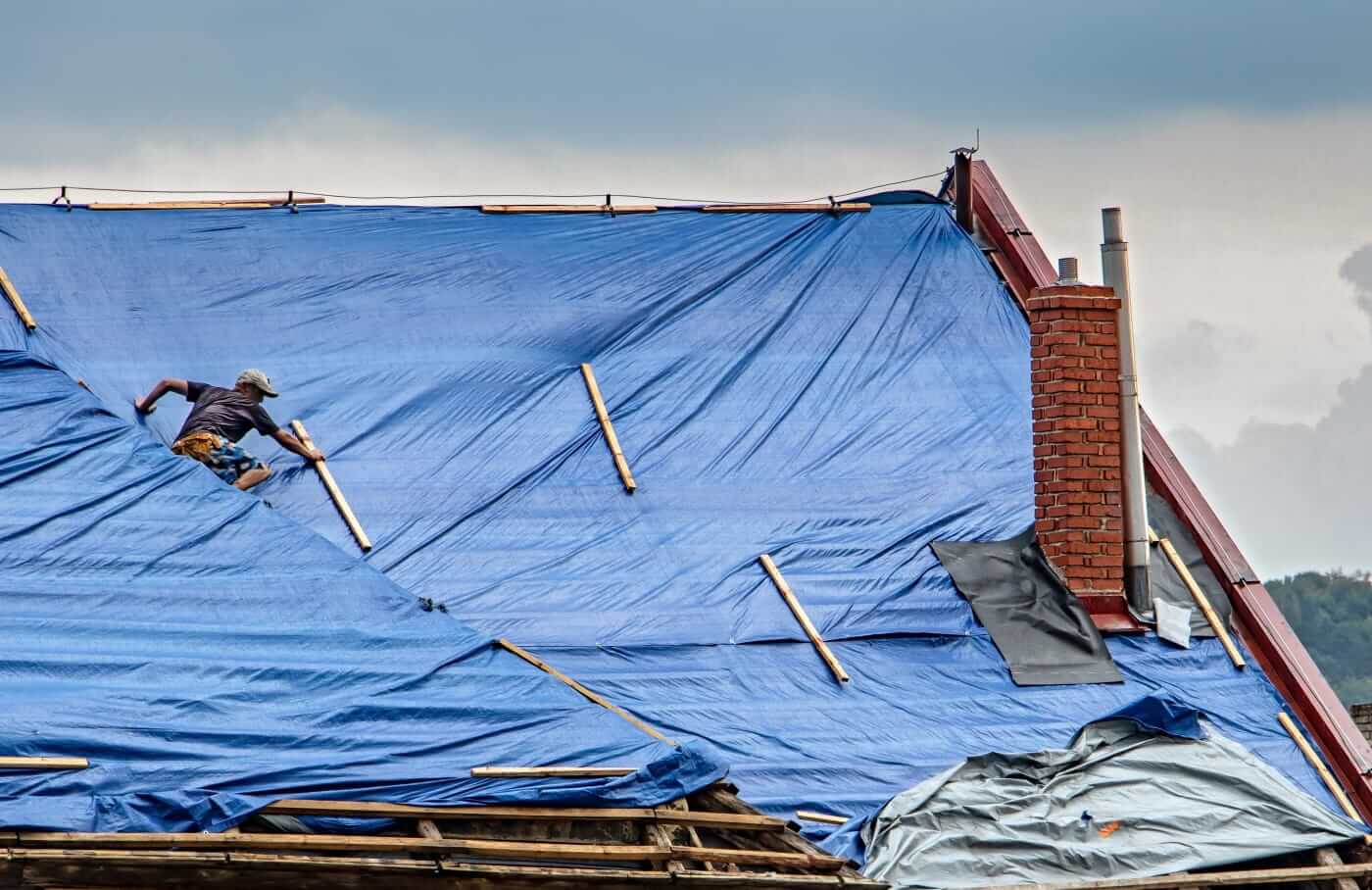
Life brings so many challenges, and none of us know what to expect, no matter how hard we try to make things predictable. Yet, what we still can’t control is nature and natural disasters. Although there are mechanisms that predict the weather and can warn of possible disasters, facing the consequences is sometimes unavoidable.
Storms can cause major damage to private properties and even entire communities. The chaos it leaves behind brings many challenges, both practical and emotional. It can literally change lives, so you can feel like there’s no way out. Yet, despite this tragedy, there’s hope and a way forward.
On the following source, learn more about dealing with trauma after major storms and hurricanes:
If your house is damaged after a storm, you might take a while to put yourself together. But as soon as the initial shock passes, you must recognize the immediate needs and plan to help you get through this disaster. So, you must face the damage and consequences after the storm and begin the journey towards recovery, both property and you.
Assess Situation

Seeing your property in chaos after the storm can be quite disturbing. But you must assess it to evaluate its current condition and do the aftermath of what repairs to expect. You can call experts to conduct an inspection or do this step on your own. If you decide to go alone, take a tour around your property, and make sure not to touch anything before your insurer and authorities come.
Look for obvious signs of damage, such as a crooked fence, damaged trees in the yard, missing shingles, or broken gutters. Pay particular attention to the roof, as roof issues can cause more problems if left unaddressed and write everything down to pinpoint which areas require closer examination.
Next, take a look at the walls and roof structure to assess your house’s structural integrity. Cracks, dents, and a saggy roofline can indicate underlying issues that need immediate attention. Move on to checking all windows and doors and see whether they can open and close properly. If you spot shattered glass, cracks, and misaligned frames, these house openings will probably need replacement.
Last but not least, inspect your home’s interior. If it’s safe to enter your home, look at the walls, ceiling, and floors to spot any signs of water intrusion, which may reveal roof leaks or major structural issues. Also, check for gas leaks, wiring issues, or HVAC system damage.
Documenting the Damage
After surviving the reality slap in your face, you have to stay calm. No matter how big or small the damage is, you must document everything. Simply, when preparing the insurance claim, you need comprehensive documentation and as many pieces of evidence as possible to prove your point and get fair compensation.
For starters, do the inventory of all damaged items. Describe the item condition, mention the quantity, and damage levels, and don’t forget to write down the estimated value of damaged items. Take clear photos or recordings of the spotted problem from different angles to provide visual evidence for insurance claims. Also, mention the sentimental value certain items might have.
Whatever you do on your property after storm damage, make sure to save the receipts. If you ask around for repair costs, get these estimates in writing to provide them as a reference and maximize your claim potential. For instance, if your windows are broken, you can call a Jupiter window contractor to get free quote for repairs.
Contacting Authorities and Insurance Providers

Even if you feel devastated after experiencing storm damage, you’re not alone. Relevant authorities will provide support and assistance, especially if there are immediate safety concerns and potential hazards on your property, so you should contact them as soon as possible.
Things like damaged electrical wiring or sewer lines, gas leaks, and structural issues to your property can pose significant risks to you, your family, and your neighbors. That’s of utmost importance to prevent further damage and diminish any risks.
As a holder of a homeowner policy, you have to take essential steps for prompt assistance and claim processing, so right after calling the authorities, the next in line is your insurer. You’ve already inspected your property and gathered damage evidence, so be ready to provide them to the insurance company. That includes all photos and documentation, if available.
Calling authorities and your insurer are proactive steps to ensure your property restoration and proper compensation for damage suffered. Just remember to keep records of all communication with local authorities and insurance companies for reference throughout the restoration process.
Securing the Property

After doing all the formalities to report the damage, you must take certain steps to prevent further damage and ensure safety on your property. For starters, you can remove all the dirt and debris that lay around. Remove fallen branches, rubble, and other messes from your yard and property exterior to enable access and minimize tripping hazards.
As all damage right after the storm is recorded and reported, you can assess to make some minor repairs to make the place as safe as possible. Quick fixes include repairing broken windows or finding a way to cover these openings, covering roof leaks, and stabilizing damaged structures to prevent further deterioration and protect against the elements.
In case of potential hazards from your damaged utilities, make sure to shut them off. Always prioritize safety, so prevent others from accessing your property if there are viable risks of something falling down or collapsing. If staying on your property isn’t entirely safe, find temporary accommodation until major repairs are done and your living space is livable again.
Planning for Long-Term Recovery

After detailed damage recording and reporting, it’s time for action to restore your house to its initial condition. Planning recovery isn’t just about your property but also your entire community. So, this phase is all about making plans for a comprehensive strategy to address the damage, rebuild infrastructure, and enhance resilience against future disasters.
You’ll start from your own property. The restoration should be done by priority, that is, you’ll first fix things that are more urgent. Of course, you’ll do repairs according to your abilities and budget. To make your home ready for major storms, see the tips from this web source.
Some things can be done as DIY projects, but for major repairs and upgrades, you should hire professional contractors. They’ll develop a detailed restoration plan following your requirements, safety standards, and local regulations.
Disasters usually unite communities, so if your neighbors also suffered storm damage, make sure to engage with them for resource-sharing, mutual assistance, and collective problem-solving. This sense of solidarity within the community can do wonders in the entire recovery process. Being together in this situation can help you access more resources, share information, and coordinate recovery efforts more effectively.
Being a storm sufferer is a hard situation that can happen to anyone. You must stay calm and think of your safety first, but you must also be aware that a prompt reaction is necessary. You need an effective plan for disaster recovery, effective communication with the community and your insurer, and collaboration to ensure you go through all with less stress and worries.
Kane Walker
Related posts
Stay connected
Today's pick
- Things to Remember While Designing Your Custom Modular Kitchen in GurgaonGurgaon now known as Gurugram is the second largest city in the state of Haryana and is a reflectiossn of an ideal modern city with futuristic goals. Witnessing rapid urbanization, it has also emerged as a hub for contemporary homes, with homeowners seeking innovative and... The post Things to Remember While Designing Your Custom Modular […]
